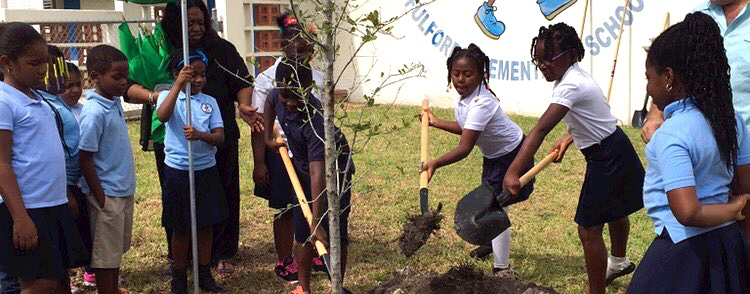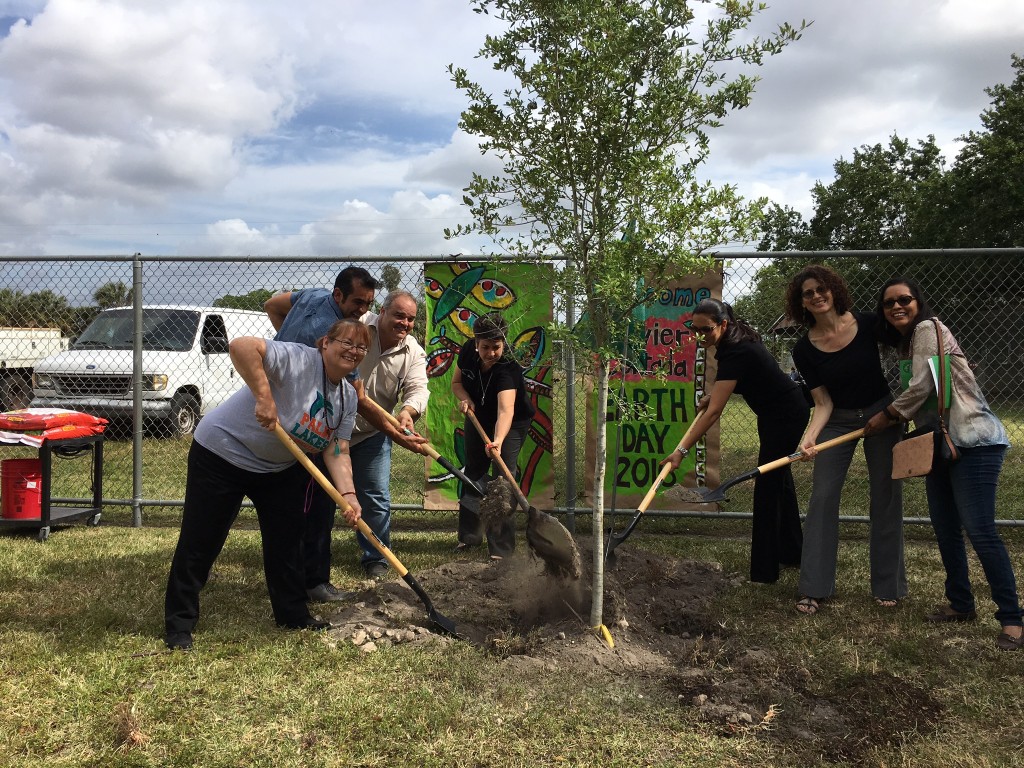
By Fernando Bretos,Curator of Ecology and Director of MUVE
Since its inception in 1970, Earth Day has empowered people around America to stand up for the planet. Now, almost 50 years later, the tradition has become global, with activities taking place over the entire month, and the entire world.
Earth Day is, of course, a special time for us here at Frost Science, and an opportunity to make positive change. If you attended Miami public schools, or have children who do, you know the campuses can be some of the most denuded and habitat-poor areas in Miami. In order to combat the problem, and bring some much-need shade to our town, Frost Science’s MUVE (Museum Volunteers for the Environment) program partnered with Miami-Dade County Public Schools, the Deering Estate and artist Xavier Cortada to plant a native tree alongside a native flag designed by Cortada at every public school in Dade County. The planting process involve students in the beautification of their campuses, and as the trees mature, they create wildlife habitat, and add beauty to our world. Over the past seven years, the program has planted more than 2,000 trees across 340+ public schools.
Frost Science provides trees every year for this project through grant funding from Wells Fargo and FedEx. Getting out and working with the community is part of our mission, and Earth Day planting is just one of the many ways MUVE works to bring nature back to our city.
